s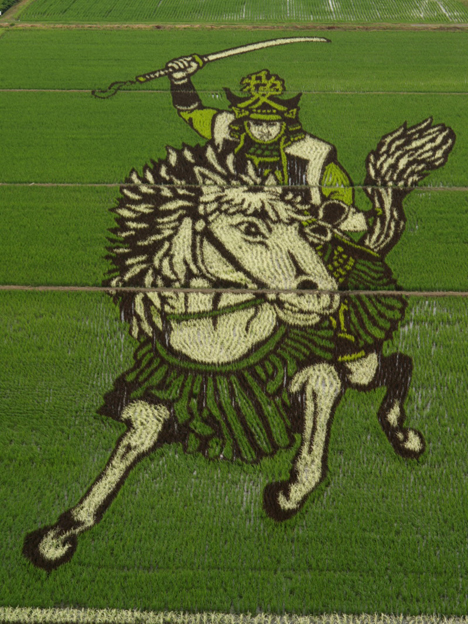
Sengoku-period warrior [Photo]
As summer progresses, crops of rice paddy art are beginning to emerge in Japan. The crop art -- created by strategically arranging and growing different colors of rice plants -- can be seen in farming communities across the country. The largest and finest work is grown in the Aomori prefecture village of Inakadate, which has earned a reputation for its agricultural artistry. This year the enormous pictures of Napoleon and a Sengoku-period warrior, both on horseback, are visible in a pair of fields adjacent to the town hall there.
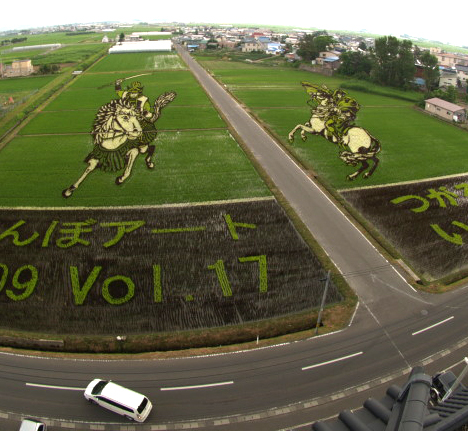
View from roof of Inakadate town hall [Photo]
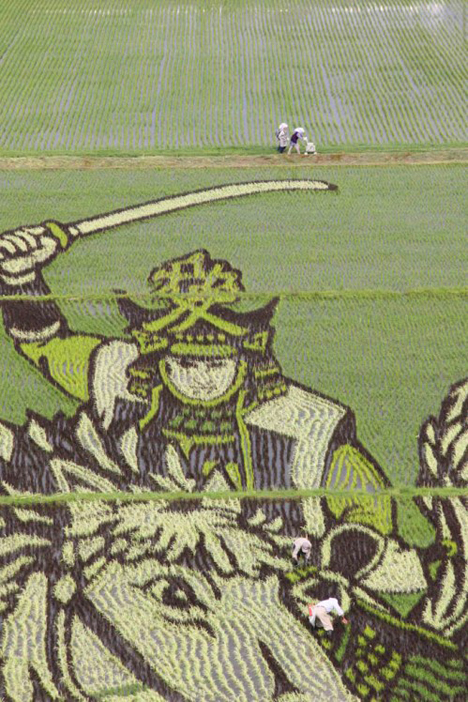
Warrior [Photo]
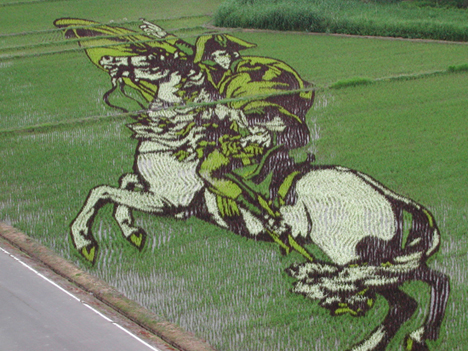
Napoleon [Photo]

View from top of warrior's head [Photo]
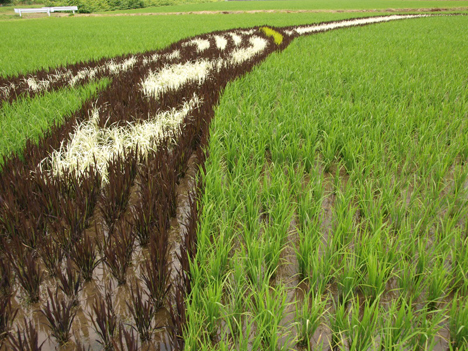
Warrior's arm [Photo]
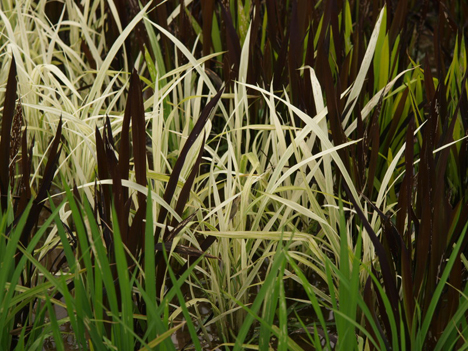
Close-up of rice plants [Photo]
* * * * *
Another relatively famous rice paddy art venue is located in the town of Yonezawa in Yamagata prefecture. This year's work depicts the 16th-century samurai Naoe Kanetsugu and his wife, Osen, whose lives are chronicled in Tenchijin, the popular, year-long historical fiction television series now airing on NHK.
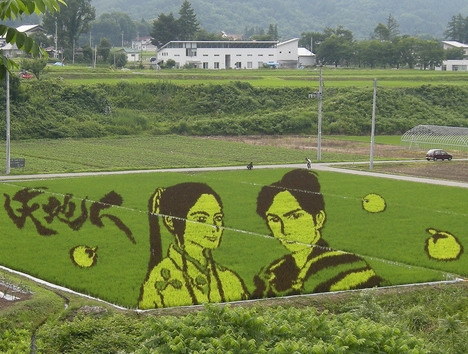
Naoe Kanetsugu and Osen [Photo: contri]
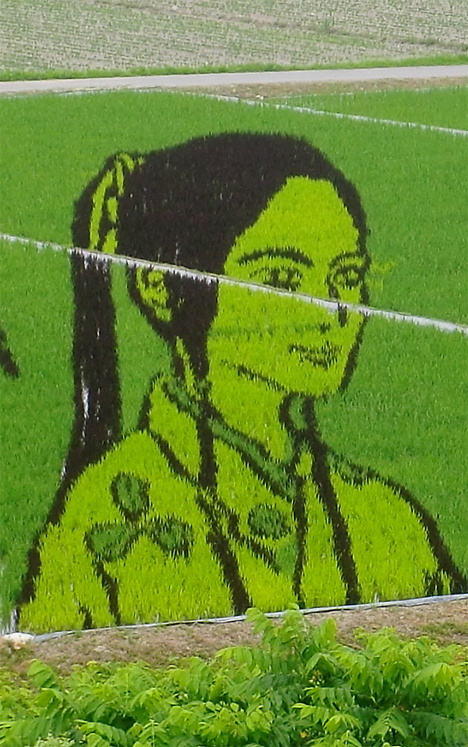
Osen [Photo]
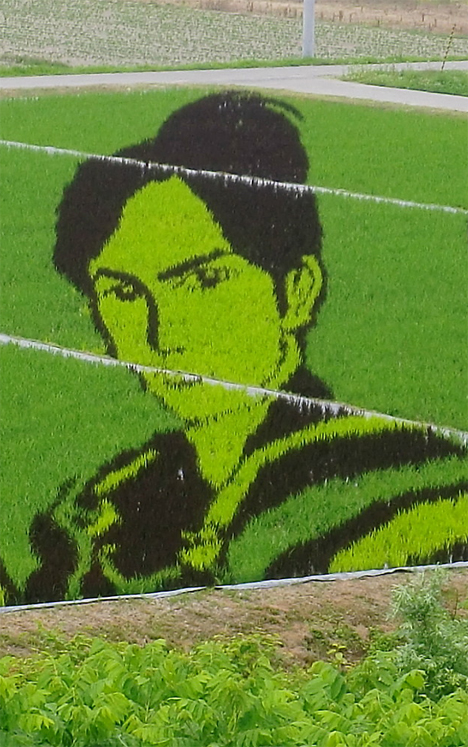
Naoe Kanetsugu [Photo]
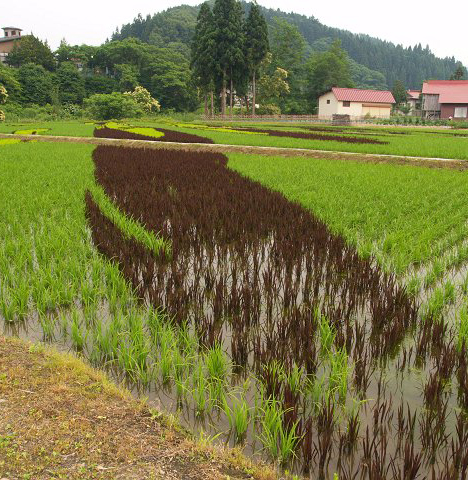
View from top of Naoe Kanetsugu's head [Photo]
* * * * *
Smaller works of crop art can be seen in other rice-farming areas of Japan. Here are a few more examples.
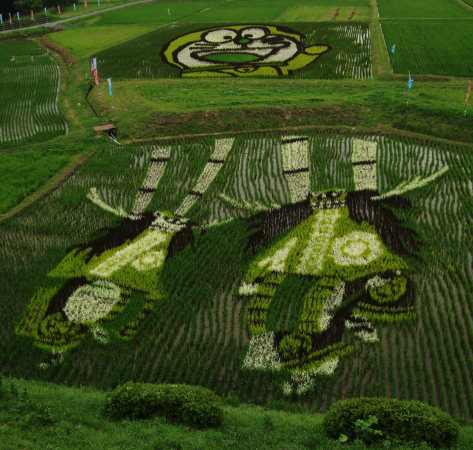
Doraemon and deer dancers (shishi-odori), location unknown [Photo]
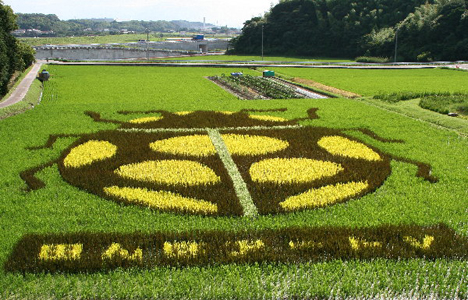
Ladybug, Nishio, Aichi prefecture [Photo]
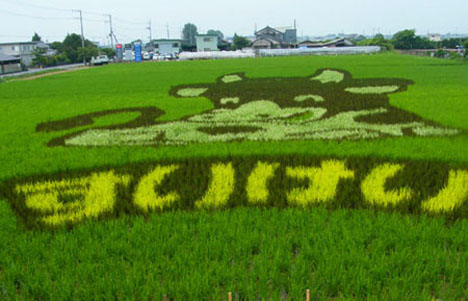
Cow, Omi-Hachiman, Shiga prefecture [Photo]
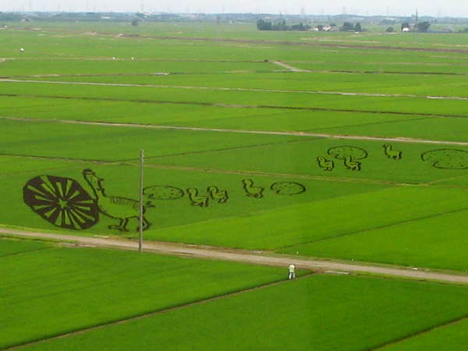
Ducks, near Fukushimagata Lagoon Water Park, Niigata prefecture [Photo]




